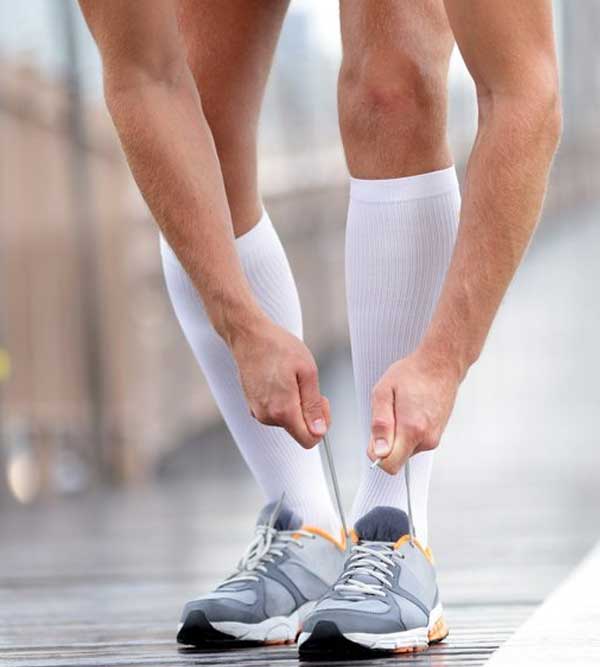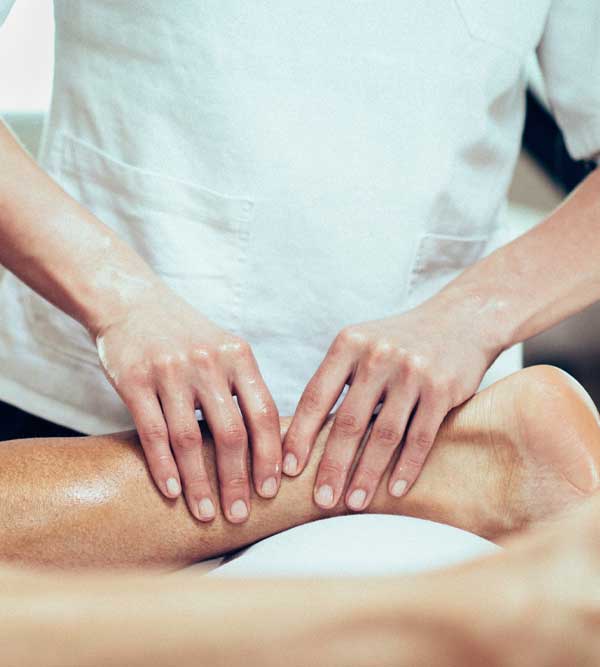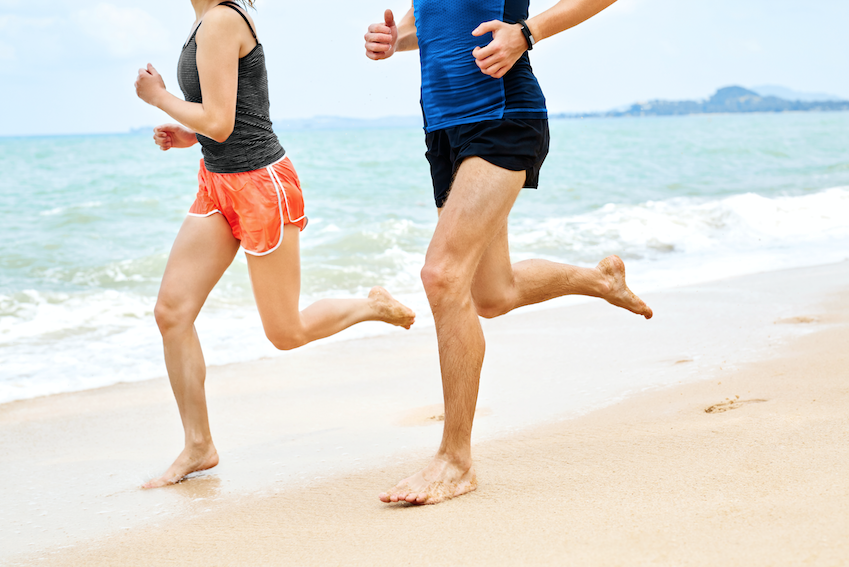11 Tips For Healthy Legs [2020 Update]
If you’re like most people, you want strong, fit, and healthy legs. Only one problem, few of us know how to get them, or how to take care of them once we have them.
Wouldn’t it be great if there was a list of simple tips, things you could do right now to get the healthy, good-looking legs you want?
That is exactly what we are going to show you with our 11 simple habits you can start today to get incredibly healthy legs inside and out. Keep reading!
1. Take simple steps to maintain a healthy weight
There are a number of ways to keep yourself at a healthy weight. Following these simple steps can not only reduce your odds of developing varicose veins, but you can also lower your risk of developing osteoarthritis, the loss of cartilage in the joints.
- Lower or control the amount of food you eat at every meal – This gives you power over what goes into your body.
- Keep moving – When you are active throughout the day your body burns calories which in turn can help maintain a healthy weight. More on this in step 2!
- Drink more water – Proper hydration is critical for maintaining your overall health. Drinking water throughout the day also helps your body burn more calories.
2. Stay active with regular exercise
Exercising regularly can help you stay at a healthy weight, and also improve circulation. Take a look at some quick examples of exercises that will help you stay active.
- Take a 30-minute daily walk – It might not seem like a lot, but the health benefits of simply walking are many, and walking makes a bigger difference than you might think!
- Go swimming or do water aerobics – These are great low-impact ways to exercise with a great return in calorie-burn.
- Run or Hike – With the correct form and the right footwear, these exercises can be fun and get you outside!
- Stretching or taking yoga classes – Maintaining flexibility in your body is a vital part of any exercise plan.
- Don’t over-think it – If none of these options are appealing to you, try dancing in your living room. Be creative! The point is simply to move your body.
3. Get comfortable with compression

One tool that you may have never considered is medical-grade compression stockings. More people including professional athletes have begun to rely on them to improve circulation, minimize swelling, and reduce recovery time after a tough workout or a long day spent on your feet. They also give you an added bonus of helping prevent varicose and spider veins.
- Find a reputable dealer of medical-grade stockings.
- Choose the look that is right for you.
- Enjoy the benefits of improved circulation in your legs
4. Support healthy blood flow by not sitting for TOO long
The job of your veins is to get your blood back to the heart. When you move your legs, your calf muscles work to pump and squeeze the blood up and out of your legs. Follow these simple steps to keep your blood moving.
- If you sit for long periods of time, plan multiple times during the day when you can get up and walk around.
- If you work from home, don’t keep all your food and drinks at your desk – This will get you standing up regularly throughout the day.
- Set a timer if you won’t remember to get up every hour or so and walk around for a few minutes.
- If you can complete some work standing up take advantage of those times to work while standing. This can help prevent varicose veins!
5. Relax with a massage

If you experience legs that are tired and achy, treat yourself to a massage. Massages help improve circulation throughout your body and make you feel rested and relaxed.
- Check with your doctor to make sure getting a massage is recommended.
- Find an accredited massage therapist with good reviews.
- Relax! Massages are meant to relax you while they decrease pain and tightness in your muscles.
6. Change your shower/bath habits
Taking a hot bath after a hard workout or a long day may feel great at the time, but the longer your body is subjected to the heat, the more likely it is to swell. This also makes it difficult for your muscles to recover.
Make these quick changes to see a difference:
- Lower the temperature of your baths and showers – Besides reducing swelling, lower temperatures can keep your skin from drying out dramatically.
- Limit the length of time spent in the bath and shower – Your skin needs moisture from the shower, but if you take long showers your natural oil will eventually all be washed off.
- Rinse off your legs with cool water at the end of your shower – This may take some getting used to, but as you experience the benefits of decreased swelling and increased venous function you may just subscribe to this new way of bathing.
7. Eat nutrient-rich foods that taste great and build you up

Going on a diet may sound like fun for some, but you may not be excited about the prospect. On the other hand, eating delicious food that is also incredibly good for you could be one of the greatest skills you learn.
Follow these easy suggestions to start changing these habits today:
- Ditch the fad diets – You need something that will help you have a healthy diet and feel great for the rest of your life! This starts with a change of mindset.
- You are what you eat – think about it. What you eat eventually filters into your bloodstream and is then used to “build” the rest of your body. What is your body built on?
- Trade out processed foods from your diet for whole foods – This means dump the frozen instant meals, and quick soups (sorry ramen).
- Add whole foods include fresh produce, vegetables, and fruit
- Eat more protein – Don’t run to the store and grab a processed protein bar! Instead, try some lean meat in a meal or even better, fish which have healthy fats and high protein!
- Sound extreme? Why not start by adding some vegetables to each meal? The beginning of your healthy diet!
8. Prevent future health problems when you stop smoking
This may take some more work on your part, but there are a number of local and national programs to support you in your decision.
If you currently smoke, stopping can provide incredible health benefits. These include:
- Starting the healing process to your lungs, circulatory systems and skin – Smoking can cause permanent damage to your lungs and is known to cause cancer all throughout your body.
- Decreases your likelihood of heart attacks or stroke – While some reasons for these conditions are genetic or outside your control, your choice to stop smoking can greatly improve your health.
- An increase in venous function which in turn lowers the chances of developing varicose veins.
9. Support your whole body with the correct shoes
Don’t forget your feet! With the right footwear on, you can avoid unwanted knee problems, back pain, and fatigue. The wrong shoe can, of course, do the opposite.
Remember, you don’t just want legs that look good, you want legs that feel good and ARE good on the inside.
These are our foot support tips:
- Invest in quality shoes that provide adequate support for your arches – Your feet hold your whole body up, they need support!
- Avoid wearing flat shoes (without any support) or high heels on a regular basis as they are designed for looks, not health benefits.
- If you are not sure what kind of shoes to buy, get advice from a doctor on what kind they recommend.
10. Recharge your whole body as you sleep

The health benefits of sleep cannot be understated. Any part of your body that you hope to improve relies on your body’s built-in ability to heal, recharge, and grow stronger as you sleep.
Here are some quick tips to improve your sleep.
- Make a schedule so you can go to sleep and wake up at a set time each day.
- Remove distractions from your sleeping area.
- Turn off the TV and stop using your cell phone 30 minutes to 1 hour before bed – Research has shown that the blue-green lights from the screens suppress the natural sleep hormone melatonin in our bodies, preventing us from winding down naturally in the evenings.
- Get a white noise generator (or app) to cut out noises in your home that might awaken you before it is time to get up.
- Set an alarm to wake you up at the appropriate time so you can get up and be active again.
- As you begin going to sleep at the same time each night, you will find your body will naturally begin to wind down when it is time to go to bed!
11. Take a load off while you kick up your heels
By elevating your legs above your heart for a few minutes each day, you can help the blood and fluids flow back to your heart more easily. It also gives your legs a break and helps keep spider and varicose veins at bay.
- Set time aside each day to elevate your legs.
- It is best to find a good-quality pillow that is designed to elevate your legs while you are laying in bed or on the couch – You can easily find them online or in local stores.
- Make sure your calves are also elevated above your thighs to ensure maximum effectiveness of this step.
- Your legs should be elevated above the level of your heart for this to work correctly – If done regularly elevating your legs can decrease swelling, improve venous function, and reduce foot pain.
For more information on improving the health of your legs, or for help with varicose veins, spider veins, and other vascular issues, visit vispdocs.com.
Vascular & Interventional Specialists of Prescott was formed in 2010 by a group of subspecialty radiologists that perform numerous minimally-invasive, low-risk procedures using the tools of our trade for guidance—x-ray, ultrasound, CT scan, and MRI. The team’s goal is to educate patients and medical communities, while also providing safe and compassionate health care, with rapid recovery times and low risk of complications.

